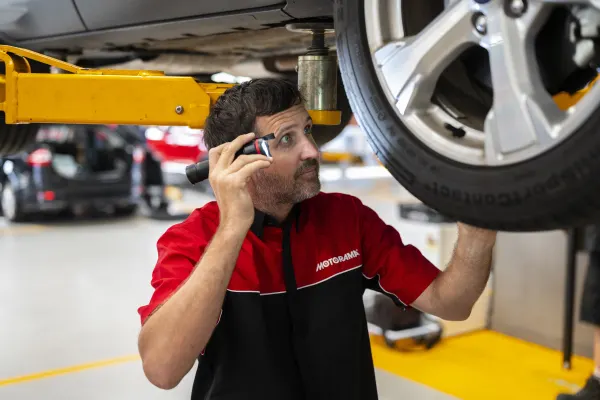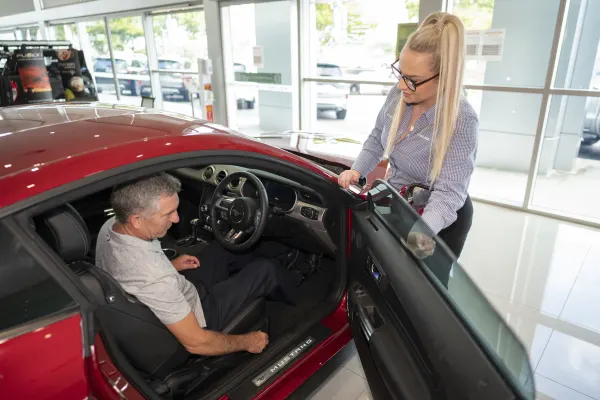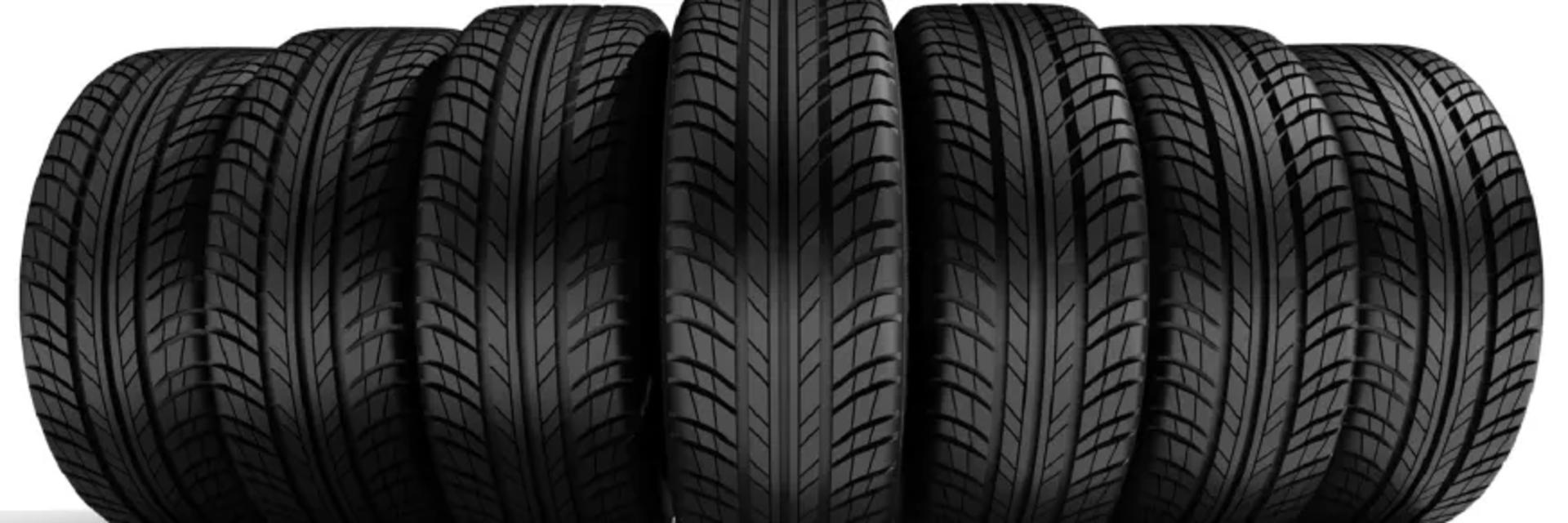
How to Choose the Right Tyres for Your Car
Posted in Servicing Insights
How to Choose the Right Tyres for Your Car
When selecting tyres, do you generally just go with the best price that the tyre shop can give you?
But when you’re shopping, do you know how to read tyre sizes to find the best tyres for performance or comfort, or for fuel efficiency?
Choosing the right tyre for your car can save you dollars & a lot of hassle in the long run. In fact, a recent UK study showed that 20% of a car’s fuel efficiency is influenced by its tyres.
READING A TYRE
Tyres for most passenger vehicles in Australia follow a general standard to show what they’re suited for. If it begins with a P, it’s for a passenger car, while a tyre beginning with LT will suit a light truck.
This will usually follow the sequence of width in millimetres, profile, construction and its diameter in inches. Somewhere near this, it will provide a number and a specific letter to specify its load index and speed rating.
You can find this on the tyre sidewall (the part of the tyre facing out), and it will give you all you need to know about a tyres technical specification including its speed rating and what its constructed of.
For example, this tyre reads 205 / 55 R 16 91V:
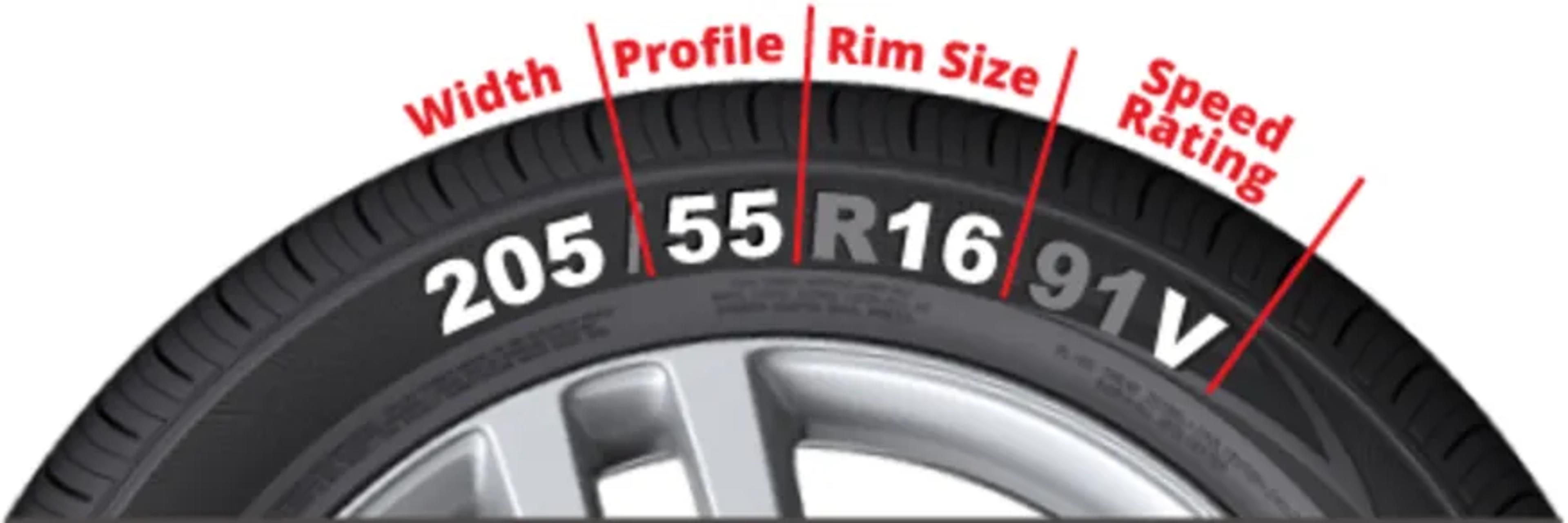
In order to read this, you can break it down into its elements.
Width: There is 205mm between the two thickest points of this tyre.
It is actually a myth that bigger tyres will give you better traction because there is more rubber on the road. What a wider tyre does do better is allow the tyre to cool quicker because there is more rubber to be on the road at any one time that allows the rest of the tyre to cool. This preserves the tread, but may come at the cost of fuel efficiency due to the heavier tyre and wheel required.
Generally speaking, the larger the car; the wider the tyres need to be in order to handle correctly on the road. For example, a hatchback may only need tyres from around 170-200mm thick, while a 4WD may need tyres at least 265mm thick.
Profile/Aspect ratio: A tyres profile, sometimes referred to as its aspect ratio, refers to the height of the sidewall as a percentage of the width. So, this tyre has a profile of 55 (or 165mm), meaning that it has a ‘low’ profile.
Average passenger cars have a profile of around 50-60, whilst four wheel drives will have a higher profile still at around 70. The profile measures the amount of tyre between the road and the wheel itself, so the lower profile of the tyres, the greater road holding performance. The trade-off is a harsher ride, as there is less rubber to soak up bumps in the road.
Construction: The most common construction type for passenger cars is radial, which is marked here by an R. Radial constructed tyres are manufactured in such a way that the sidewall is able to be flexible at speed, which gives you more control of the car.
Diameter: The diameter of the tyre should match the diameter of the wheel. For example, this tyre has a 17-inch diameter, which should be paired with a 17-inch wheel. If you change your wheel sizes, you will need to buy the matching tyres.
Load index: A tyre may also have a number to give its load index, which tells you how much weight that individual tyre can handle; where the higher the number, the more weight it can handle.
For example, the load index on this tyre is 91, meaning that this individual tyre can support 615kg of the cars weight.
Speed rating: Following the load index, there may also be a letter to show the tyres speed rating. The further down the alphabet, the higher speed that tyre is able to perform at – with the exception of H-rated tyres, like these, which can perform at speeds above 210km/h.
Tyres with a speed rating from S onwards are sufficient for most passenger cars, meaning that they can travel at speeds above 180km/h. This is the safe speed that the tyres can travel without overheating, so anything below this is not really practical especially if you travel at highway speeds.
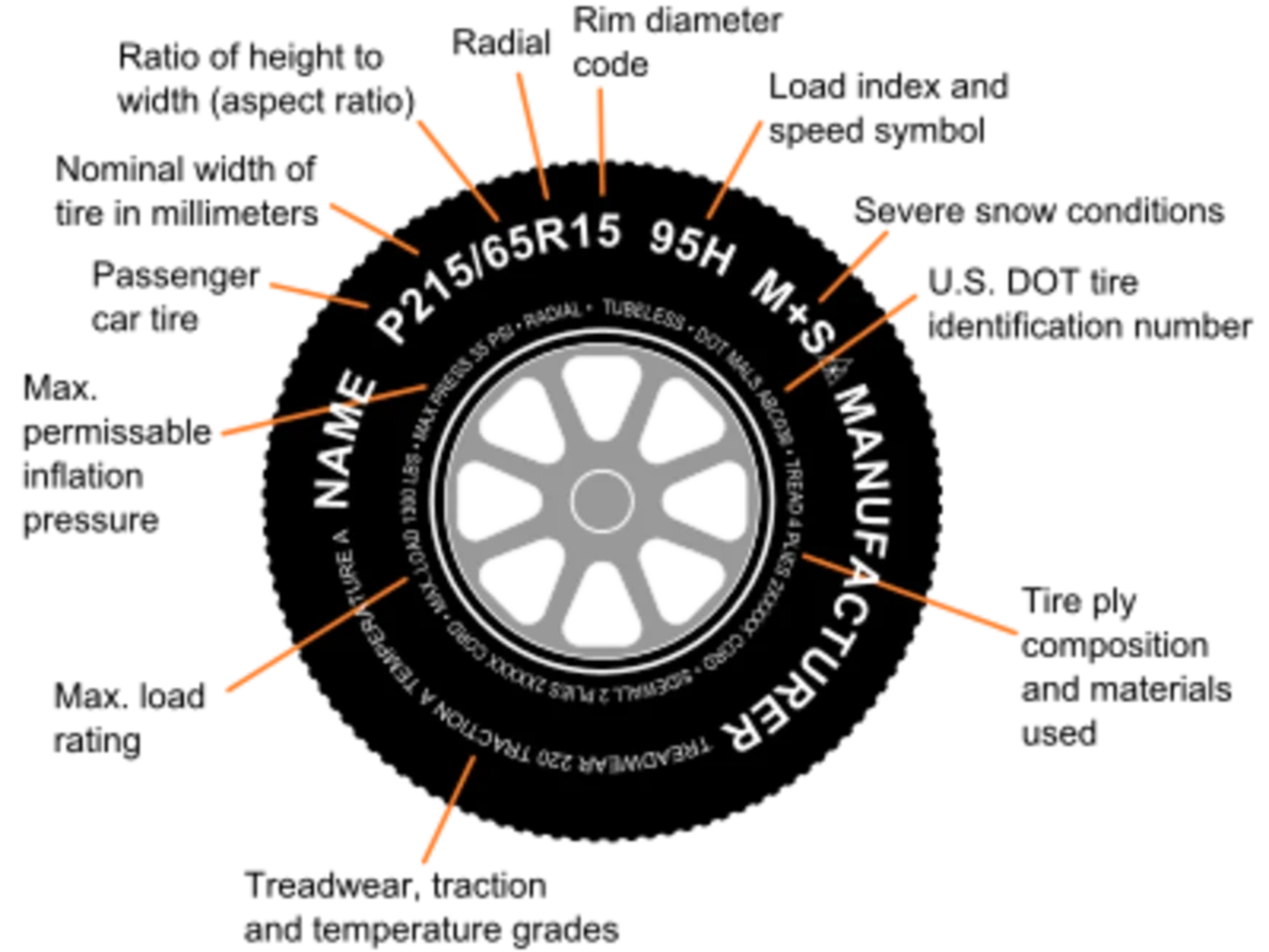
You may not find a load index or speed rating on all tyres, because it’s not required by law. Most tyres do have it nowadays, but you can always ask your tyre manufacturer or retailer when shopping for tyres if not.
If you’re still unsure, the expert service team at Motorama Tyre & Service can take you through your options in getting some new rubber for your car. We can fit your new tyres and have you back on the road in no time, or even do it in conjunction with your scheduled service.

